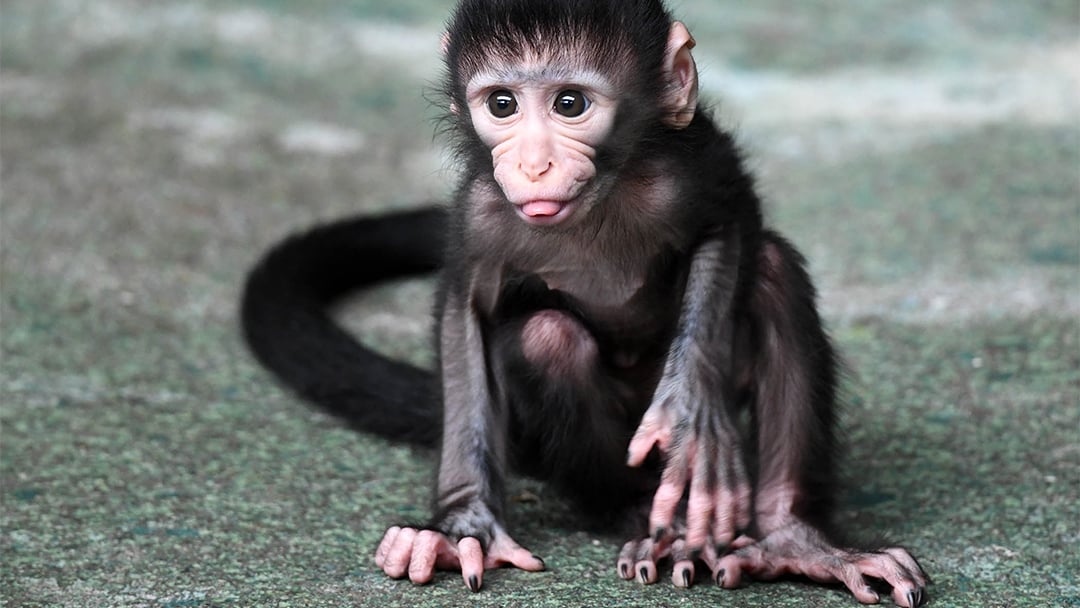
The Enchanting World of Baby Monkeys: A Journey into the Realm of Primate Infancy
In the heart of lush rainforests and sprawling savannas, amidst the symphony of nature’s melodies, resides a captivating world of baby monkeys. These tiny creatures, with their wide-eyed wonder and infectious playfulness, embody the essence of innocence and boundless curiosity. From the moment they emerge from their mothers’ wombs, baby monkeys embark on an extraordinary journey filled with learning, exploration, and the forging of unbreakable bonds.
Birth and Early Development
Baby monkeys, known as infants, are born after a gestation period that varies depending on the species. Upon their arrival into the world, they are typically small and helpless, weighing only a few ounces. Their bodies are covered in a soft, downy fur that provides warmth and protection. Their eyes are often closed or partially open, and their limbs are weak and uncoordinated.
During the first few weeks of life, baby monkeys rely heavily on their mothers for nourishment and care. They nurse frequently, receiving essential nutrients and antibodies that boost their immune systems. Mothers also provide warmth and comfort, huddling close to their infants to regulate their body temperature.
Physical and Cognitive Development
As baby monkeys grow, they undergo rapid physical and cognitive development. Their bodies become stronger and more agile, allowing them to explore their surroundings with increasing confidence. They begin to develop fine motor skills, such as grasping objects and climbing branches. Their senses also become more acute, enabling them to perceive the world around them with greater clarity.
Cognitively, baby monkeys exhibit a remarkable capacity for learning and problem-solving. They observe their mothers and other members of their troop, imitating their behaviors and absorbing knowledge about their environment. They engage in play, which serves as a crucial avenue for developing social skills and honing their physical abilities.
Socialization and Bonding
Socialization plays a vital role in the development of baby monkeys. They form strong bonds with their mothers, who provide them with protection, guidance, and emotional support. Infants also interact with other members of their troop, including siblings, cousins, and aunts. These interactions help them learn the social norms and behaviors of their species.
As they grow older, baby monkeys establish friendships with other infants. They engage in playful chases, grooming sessions, and shared exploration. These bonds provide a sense of belonging and security, fostering the development of empathy and cooperation.
Communication and Vocalizations
Baby monkeys communicate with their mothers and other troop members through a variety of vocalizations. They emit high-pitched cries to signal hunger, distress, or the need for attention. They also use specific calls to alert their mothers to potential predators or to maintain contact while foraging.
As they mature, baby monkeys develop more complex vocalizations, including chattering, grunting, and squealing. These vocalizations serve a range of purposes, from expressing emotions to coordinating group activities.
Independence and Weaning
The transition to independence is a gradual process for baby monkeys. As they grow stronger and more capable, they begin to spend more time away from their mothers. They explore their surroundings, test their limits, and learn to forage for food.
Weaning, the process of transitioning from milk to solid food, typically occurs over several months. During this time, baby monkeys gradually reduce their milk intake while increasing their consumption of fruits, leaves, and insects.
Challenges and Threats
Despite their adorable appearance and playful nature, baby monkeys face numerous challenges and threats in the wild. Predators, such as leopards, eagles, and snakes, pose a constant danger. Disease and malnutrition can also take a toll on their health.
Human activities, such as deforestation and habitat destruction, can also have a devastating impact on baby monkeys. The loss of their natural habitats can disrupt their food sources and expose them to increased risks.
Conservation and Protection
The conservation of baby monkeys and their habitats is essential for the survival of these fascinating creatures. Protecting their forests, combating illegal wildlife trade, and promoting sustainable practices are crucial steps towards ensuring their well-being.
Organizations dedicated to primate conservation play a vital role in monitoring populations, conducting research, and raising awareness about the importance of these animals. By supporting their efforts, we can help safeguard the future of baby monkeys and the ecosystems they inhabit.
Conclusion
Baby monkeys are a testament to the wonders of nature. Their playful antics, unyielding curiosity, and strong family bonds captivate our hearts and inspire us to appreciate the beauty and fragility of the natural world. By understanding their unique characteristics and the challenges they face, we can contribute to their conservation and ensure that future generations can continue to marvel at the enchanting world of baby monkeys.
